psychology
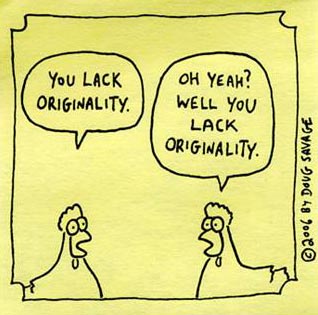
Conformity is such a strong influence in society that it’s impossible to understand human behaviour without it. Psychological experiments show that people will deny the evidence of their own eyes in order to conform with other people.
Understanding when we conform has all kinds of practical real-world benefits, depending on your aims: it can help you understand your own behaviour as well as understand how others will behave under a variety of different situational pressures. Everyone should be aware of these factors and how they affect the most important areas of their social life.
Here are the ten timeless influencers of conformity:
{ PsyBlog | Continue reading }
cartoon { Doug Savage }
haha, psychology | February 25th, 2010 10:00 am

Erotomania is a type of delusion in which the affected person believes that another person, usually a stranger, is in love with him or her.
The illness often occurs during psychosis, especially in patients with schizophrenia or bipolar mania.
Erotomania is also called de Clérambault’s syndrome, after the French psychiatrist Gaëtan Gatian de Clérambault (1872–1934).
The term erotomania is often confused with obsessive love, obsession with unrequited love, or hypersexuality (hypersexuality replaces the older concepts of nymphomania (furor uterinus) and satyriasis.).
{ Wikipedia | Continue reading }

The Reagan assassination attempt occurred in Washington, D.C. on Monday, March 30, 1981.

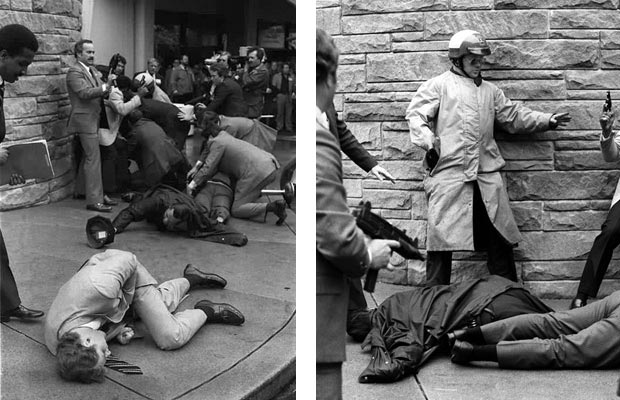
President Reagan and three others were shot and wounded by John Hinckley, Jr. with a .22-caliber pistol.
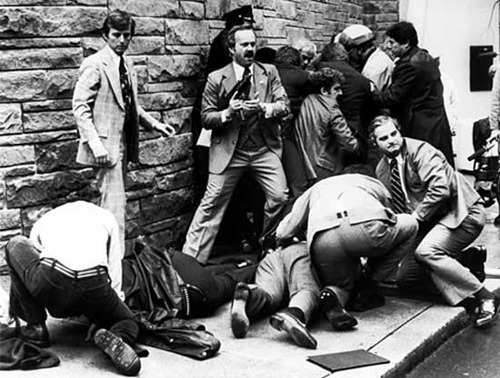


Reagan was the first serving United States president to survive being shot in an assassination attempt.

{ Reagan assassination attempt | Wikipedia | Continue reading | Google Images | Related: In a 1982 speech, President Ronald Reagan declared illicit drugs a threat to America’s national security, putting a too-literal gloss on the phrase “war on drugs.” }

The motivation behind Hinckley’s attack stemmed from an obsession with actress Jodie Foster due to erotomania. While living in Hollywood in the late 1970s, he saw the film Taxi Driver at least 15 times, apparently identifying strongly with Travis Bickle, the lead character.
Hinckley arrived in Washington, D.C. on Sunday, March 29, getting off a Greyhound Lines bus and checking into the Park Central Hotel. He had breakfast at McDonald’s the next morning, noticed U.S. President Ronald Reagan’s schedule on page A4 of the Washington Star, and decided it was time to make his move.
Knowing that he might not live to tell about shooting Reagan, Hinckley wrote (but did not mail) a letter to Foster about two hours prior to the assassination attempt, saying that he hoped to impress her with the magnitude of his action.
{ Wikipedia | Continue reading | The Trial of John Hinckley, 1982 | Hinckley bought two identical .22-caliber revolvers in Rocky’s Pawn Shop in Dallas on Oct. 3, 1980 | Photos: John Hinckley, Jr. | Jodie Foster in Taxi Driver. }
U.S., flashback, guns, incidents, psychology, relationships, visual design, weirdos | February 18th, 2010 5:19 pm
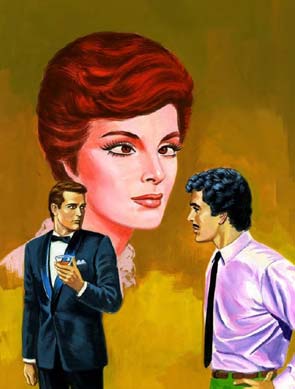
The aim of the present paper was to evaluate the current state of knowledge on the perception of facial attractiveness and to assess the opportunity for research on poorly explored issues regarding facial preferences. (…) In spite of thousands of studies conducted, facial attractiveness research may be regarded as rather poorly progressed, although prospects for it are good. (…)
1. The meaning of attractiveness. A researcher may tell a judge how to interpret the notion of “attractiveness,” or the judge may him- or herself explicitly or implicitly define the meaning of the attractiveness. Qualities of attractiveness are able to be distinguished in terms of a spouse, a lover, a friend, or a co-worker, etc. People may judge FacA in individuals of their own sex in order to estimate their competitiveness on the mate market, or they may make a judgement about their own facial attractiveness (FacA) to estimate their own competitiveness, or they may assess FacA of their children so as to decide about how much should be invested in them, etc.
2. The characteristics of the judge. Many factors influence an individual’s pattern of facial preferences (FacP): genes, cultural norms and fads, lifetime experience, biological, ecological, physiological and psychological state of the judge, his knowledge or idea about the owner of the face examined, and the perceived similarity of the examined face to his own face [Kościński 2008].
3. The face’s category. The perception of the judge as to affiliation of the face to a category (e.g., sexual, age, racial) may influence their assessment of the face and, thereby, the judgement of FacA. For example, a face of androgynous appearance may be taken for male or female one, which can influence its perception [Webster et al. 2004].
Thus, the assessment of FacA is the method by which a person maps a facial image onto various evaluative judgements about the “imagined” owner of a face. The scope of research on FacA should comprise all biologically and socially significant forms of facial assessments (i.e., various senses of attractiveness and various facial categories) made by judges having diverse traits.
{ Krzysztof Koscinski, Current status and future directions of research on facial attractiveness, Anthropological Review, Vol. 72, 45–65 (2009) | PDF | Continue reading }
ideas, psychology, relationships | February 18th, 2010 5:18 pm

What is nostalgia good for? A Standard Life study suggests 28 to 40-year-olds don’t plan for the future because they prefer to reminisce about past times. (…)
In recent years, psychologists have been trying to analyse the powerful and enduring appeal of our own past - what Mr Routledge calls the “psychological underpinnings of nostalgia”.
“Why does it matter? Why would a 40-year-old man care about a car he drove when he was 18?” he asks. It matters, quite simply, because nostalgia makes us feel good.
Once nostalgia was considered a sickness - the word derives from the Greek “nostos” (return) and “algos” (pain), suggesting suffering due to a desire to return to a place of origin. (…)
“Nostalgia is a way for us to tap into the past experiences that we have that are quite meaningful - to remind us that our lives are worthwhile, that we are people of value, that we have good relationships, that we are happy and that life has some sense of purpose or meaning.” (…)
Nostalgia is usually involuntary and triggered by negative feelings - most commonly loneliness - against which it acts as a sort of natural anti-depressant by countering those feelings.
{ BBC | Continue reading }
Linguistics, flashback, psychology, time | February 18th, 2010 5:12 pm

The long-term effects of short-term emotions
The heat of the moment is a powerful, dangerous thing. We all know this. If we’re happy, we may be overly generous. Maybe we leave a big tip, or buy a boat. If we’re irritated, we may snap. Maybe we rifle off that nasty e-mail to the boss, or punch someone. And for that fleeting second, we feel great. But the regret—and the consequences of that decision—may last years, a whole career, or even a lifetime.
At least the regret will serve us well, right? Lesson learned—maybe.
Maybe not. My friend Eduardo Andrade and I wondered if emotions could influence how people make decisions even after the heat or anxiety or exhilaration wears off. We suspected they could. As research going back to Festinger’s cognitive dissonance theory suggests, the problem with emotional decisions is that our actions loom larger than the conditions under which the decisions were made. When we confront a situation, our mind looks for a precedent among past actions without regard to whether a decision was made in emotional or unemotional circumstances. Which means we end up repeating our mistakes, even after we’ve cooled off.
{ Harvard Business Review | Continue reading }
ideas, psychology | February 4th, 2010 9:24 am

Imagine that your stockbroker - or the friend who’s always giving you stock tips - called and told you he had come up with a new investment strategy. Price-to-earnings ratios, debt levels, management, competition, what the company makes, and how well it makes it, all those considerations go out the window. The new strategy is this: Invest in companies with names that are very easy to pronounce.
This would probably not strike you as a great idea. But, if recent research is to be believed, it might just be brilliant.
One of the hottest topics in psychology today is something called “cognitive fluency.” Cognitive fluency is simply a measure of how easy it is to think about something, and it turns out that people prefer things that are easy to think about to those that are hard. On the face of it, it’s a rather intuitive idea. But psychologists are only beginning to uncover the surprising extent to which fluency guides our thinking, and in situations where we have no idea it is at work.
{ Boston Globe | Continue reading | Thanks James! }
photo { Helmut Newton, Nova magazine, Paris, 1973 }
economics, psychology | February 4th, 2010 9:22 am

“How we process information is related not just to our brains but to our entire body,” said Nils B. Jostmann of the University of Amsterdam. “We use every system available to us to come to a conclusion and make sense of what’s going on.”
Research in embodied cognition has revealed that the body takes language to heart and can be awfully literal-minded.
{ Natalie Angier/NY Times | Continue reading }
brain, psychology, science | February 4th, 2010 9:21 am

Why are people so blissfully ignorant of certain aspects of their personalities?
Take an everyday example: there are some infuriating people who are always late for appointments. A few of these people explain it by saying they are ‘laid-back’, while others seem unaware that they’re always late.
For laid-back people, their lateness is a part of their personality, they are aware of it and presumably not worried about appearing unconscientious. For the unaware it’s almost as if they don’t realise they’re always late. How is that possible?
It’s probably because they’ve never noticed or paid attention to the fact that they are always late so they never learn to think of themselves as lacking conscientiousness. Or so suggests a psychological theory describing how we think about ourselves called self-schema theory.
This theory says that we have developed ’schemas’, like internal maps of our personalities, which we use to understand and explain our current and future behaviour to ourselves, e.g. I’m always on time for meetings so I’m a conscientious person.
However schema theory also suggests that these maps have uncharted areas, leaving people with certain blind spots in their self-knowledge.
{ PsyBlog | Continue reading }
psychology, relationships | February 4th, 2010 9:20 am

Chronic pain is associated with a loss of the normal capacity to know where your body is. Chronic pain is also associated with odd bodily feelings. To find out if people with chronic back pain had trouble ‘feeling’ their back, they were asked to draw on a piece of paper the outline of where they felt their back to be. This is a bit tricky to understand, but imagine you are surveying, in your head, how your body feels and then drawing its location. Anyway, you might have to read the paper to really get it. This is what we found: six out of six patients with low back pain, when they were trying to draw where they felt their back to be, said “I can’t find it” or “I’ve lost it”. When an independent investigator assessed sensory acuity on the back, sensory acuity was reduced in the same place the patient couldn’t feel properly. (…)
In short we think it demonstrates that chronic back pain is associated with distorted body image of the back.
{ Body in Mind | Continue reading }
health, psychology | February 4th, 2010 9:18 am
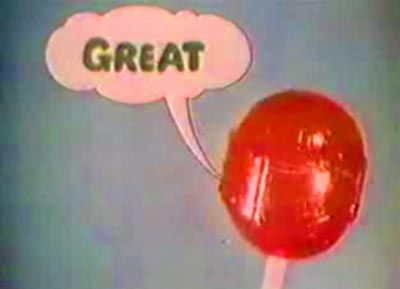
You can’t buy happiness, but you can at least inherit it, said British and Australian researchers, after studying a thousand pairs of identical and non-identical twins. Their Eureka! on happiness is: Genes control half the personality traits that make people happy, while factors such as relationships, health and careers are responsible for the rest of our well-being.
The researchers identified common genes in identical twins that result in certain personality traits and predispose people to happiness. Sociable, active, stable, hardworking and conscientious people tend to be happier, the researchers reported in Psychological Science.
{ The Hindu | Continue reading }
More than a century ago, an Irish economist named Francis Edgeworth imagined a futuristic device that he called a hedonimeter. It would be, Edgeworth speculated, “an ideally perfect instrument, a psychophysical machine.” His hedonimeter would measure happiness by “continually registering the height of pleasure experienced by an individual.”
This may sound more like something out of science fiction than an idea from the annals of economic history. But Edgeworth’s fantasy grew out of his utilitarian approach to economics, with its assumption that the best way to make choices and allocate resources was to aim to maximize happiness in society. Today, the idea that happiness can indeed be measured and quantified remains at the heart of a new science of happiness.
Over the last few decades, psychologists, neuroscientists, sociologists, behavioral economists and other social scientists have been busy using cold, hard data to try to fill in some of the blank spaces on the map of human happiness. It turns out that no hedonimeter is necessary. Much of the latest data on happiness is generated simply by asking people how they feel. (…)
As historian of happiness Darrin McMahon said in a paper he presented at a 2006 Notre Dame conference on the subject, people “have never been as preoccupied, never been as obsessed, I would argue, with happiness as they are right now.”
{ University of Notre Dame | Continue reading }
read more { Happiness: Cognition, Experience, Language | Collegium, Volume 3, 2008 }
genes, ideas, psychology, science | January 28th, 2010 5:26 pm

Several great psychology and neuroscience studies were published in 2009. Below I’ve chosen 10 that I think are among the most noteworthy. (…)
1. If you have to choose between buying something or spending the money on a memorable experience, go with the experience. (…)
8. Turns out, saying you’re sorry really is important—and not just to you. (…)
9. We can become bored with just about anything, but there may be a way to reverse the habituation blues.
{ True/Slant | Continue reading }
psychology | January 28th, 2010 5:23 pm

So Wiseman has written a self-help book of his own, a collection of techniques built on findings from academic research in psychology.
Call it evidence-based self-help. The book is called 59 Seconds, for the time it’s supposed to take to practice each of the bits of advice Wiseman lays out within: Looking to seduce someone? Take your date to an amusement park or on a vigorous run, for research shows that attraction increases along with heart rate. Think someone’s prone to telling you white lies? Correspond more with them by e-mail, for research shows people are less likely to prevaricate when there’s a written record that could trip them up later.
{ Freakonomics | Continue reading | Interview }
books, guide, psychology | January 28th, 2010 5:22 pm

What is a “mental illness”? What is an “illness”? What does the description and classification of “mental illnesses” actually involve, and is the description of “new” mental illnesses description of actually existing entities, or the creation of them?
“Solastalgia” is a neologism, invented by the Australian environmental philosopher Glenn Albrecht, to give greater meaning and clarity to psychological distress caused by environmental change. …) The doctor and former British Foreign Secretary, Lord Owen, has coined the phrase “hubris syndrome” to describe the mindset of prime ministers and presidents whose behaviour is characterised by reckless, hubristic belief in their own rightness.
This paper uses both the concept of solastalgia and the related concepts Albrecht posited of psychoterratic and somaterratic illnesses and hubris syndrome as a starting point to explore issues around the meaning of mental illness, and what it means to describe and classify mental illness.
{ Seamus P. MacSuibhne, What makes “a new mental illness”?: The cases of solastalgia and hubris syndrome | Cosmos and History: The Journal of Natural and Social Philosophy | Continue reading }
quote { Thanks Robert }
health, ideas, psychology | January 28th, 2010 5:21 pm

“When a man sits with a pretty girl for an hour,” said Albert Einstein, “it seems like a minute. But let him sit on a hot stove for a minute, and it’s longer than any hour.” Einstein was describing one of the most profound implications of his Theory of General Relativity - that the perception of time is subjective. This is something we all know from experience: time flies when we are enjoying ourselves, but seems to drag on when we are doing something tedious.
The subjective experience of time can also be manipulated experimentally. Visual stimuli which appear to be approaching are perceived to be longer in duration than when viewed as static or moving away. Similarly, participants presented with a stream of otherwise identical stimuli, but including one oddball (or “deviant”) stimulus, tend to perceive the deviant stimulus as lasting longer than the others. The underlying neural mechanisms of this are unknown, but now the first neuroimaging study of this phenomenon implicates the involvement of brain structures which are thought to be required for cognitive control and subjective awareness.
The apparent prolonged duration of a looming or deviant stimulus is referred to as the time dilation illusion, and three possible, but not mutually exclusive, explanations for why it might occur have been put forward. First, the stimulus might be perceived as lasting longer because it has unusual properties which require an increased amount of attention to be devoted to it. Alternatively, the perceived duration of the stimulus might reflect the amount of energy expended in generating its neural representation (that is, duration is a function of coding efficiency). Finally, the effect might be due to the intrinsic dynamic properties of the stimulus, such that the brain estimates time based on the number of changes in an event.
{ Neurophilosophy/ScienceBlogs | Continue reading }
psychology, science, time | January 28th, 2010 5:20 pm

The relationship between emotions and rationality is one that has preoccupied man for thousands of years. As the ancient Stoics said, the emotions typically involve the judgement that harm or benefit is at hand (Sorabji 2006). Already, then, there was thought to be a relationship between emotions and ‘judgement’, the latter implying a degree of rationality. But Sorabji, a philosopher, also points out that the mere intellectual appreciation of benefit or harm does not constitute emotion, but there must be some physiological disturbance: disembodied emotion is not meaningful. Yet the physiological reactions involved in emotions are typically thought of, since the development of evolutionary theory, as something of more primitive origins than reasoning. One reaction to this would be to argue that emotions govern actions that are urgent and essential to survival, whereas reasoning is dispassionate and calculating. (…)
To understand the usefulness of neuroscience in examining the rationality of decision-making, it is worth looking at an example. Current neurological research shows that people with orbitofrontal cortical lesions have difficulties in anticipating the negative emotional consequences of their choices. People with healthy brains, however, seem to take account of these emotions, which are mediated through and are consistent with counterfactual thinking in the assessment of choice alternatives (Bechara et al. 1994). More generally, results from psychological and neurological research show that emotions and affective states are not just sources of biased judgements, but may also serve as essential functions leading to more appropriate choices.
{ Alan Kirman, Pierre Livet and Miriam Teschl | Continue reading | More: Theme Issue ‘Rationality and emotions’ | The Royal Society B }
photo { Ansen Seale }
brain, ideas, psychology, science | January 21st, 2010 8:35 pm

What do we know about the relationship between mental illness and jazz?
A review of biographical material of 40 famous jazz musicians of the period from 1945 to 1960 excluding those who were still alive, was studied and rated for psychiatric diagnoses according to the DSM IV classification.
Results:
• 10% (4) had family psychiatric disorder
• 17,5% (7) had unhappy or unstable early lifes
• 52,5% (21) were addicted to heroin some time during their lives.
• 27,5 (11) were dependent on alcohol and 15% (6) abused alcohol
• 8% (3) were dependent on cocaine
• 8% (3) had psychotic disorder
• 28,5% (11) had mood disorders
• 5% (2) had anxiety disorders
• 17,5% (7) had sentsation seeking tendencies such as disinhibition and thrill and adventure seeking. This has been linked to borderline personality disorder
• 2 killed themselfs later in life
{ Dr. Shock | Continue reading }
music, psychology | January 21st, 2010 8:24 pm

The brain processes fearful faces more quickly when seen out of the corner of the eye than when viewed straight on. Dimitri Bayle and colleagues, who made their finding using magnetoencephalography (MEG) brain scanning, believe this bias has probably evolved because threats are more likely to come from side-on.
{ BPS | Continue reading }
eyes, psychology, science | January 21st, 2010 8:16 pm
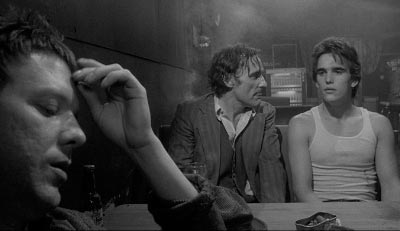
Bayesian probability is a great model of rationality that gets lots of important things right, but there are two ways in which its simple version, the one that comes most easily to mind, is extremely misleading.
One way is that it is too easy to assume that all our thoughts are conscious – in fact we are aware of only a tiny fraction of what goes on in our minds, perhaps only one part in a thousand. We have to deal with not only “running on error-prone hardware”, but worse, relying on purposely misleading inputs. Our subconscious often makes coordinated efforts to mislead us on particular topics. (…)
We may see one part in a thousand of our minds, but that fraction pales by comparison to the fact that we are each only one part in seven billion of living humanity.
Taking this fact seriously requires even bigger changes to how we think about rationality. OK, we don’t need to consider it for topics that only we can influence. But for most interesting important topics, it matters far more what the entire world does than what we personally do.
{ OvercomingBias | Continue reading }
ideas, psychology | January 21st, 2010 8:15 pm
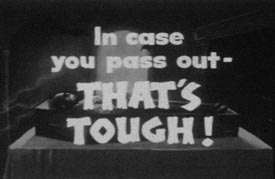
Tom alerted me to this fantastic brief case published in the British Medical Journal where a builder is admitted to hospital in great pain after a nail penetrated all the way through his boot. But it turned out that the pain was entirely psychological, as the nail had missed his foot by sliding between his toes. (…)
This isn’t really the nocebo effect, where ’side-effects’ appear after having taken nothing but a placebo, but more similar to what doctors might describe in its persistent form as somatisation disorder where physical symptoms appear that aren’t explained by tissue damage.
{ Mind Hacks | Continue reading }
incidents, psychology | January 21st, 2010 8:09 pm

A study that’s in press at Social Cognition has shown that women rate men’s photos as more attractive when they’re placed near the top of the screen. By contrast, men rate women’s photos as more attractive when they’re located near the bottom of the screen. (…)
The results could help explain why, in even more cases than you’d expect based on sex differences in height, the man in a heterosexual couple is taller than the female. ‘Height could be a cue to power and hence attractiveness,’ they said.
{ BPS | Continue reading }
psychology, relationships | January 14th, 2010 6:09 pm






























